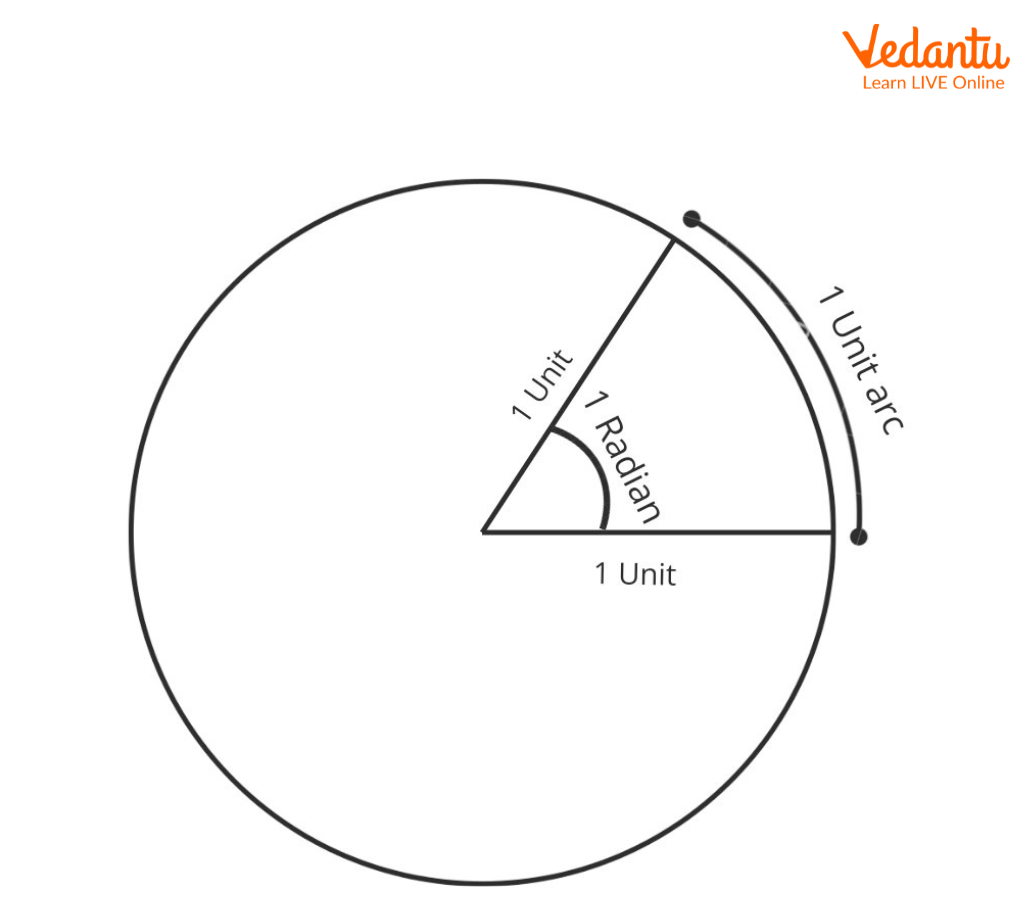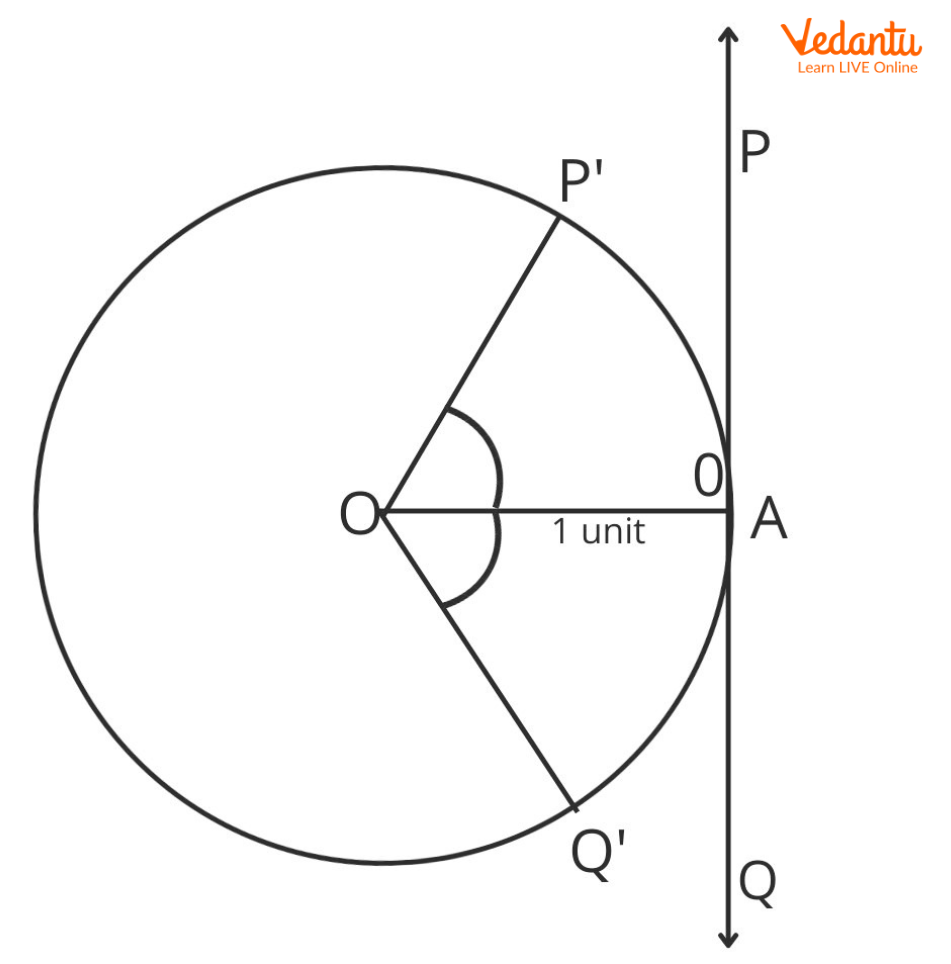




Introduction to Concept of Radian Measure
Radian Measure was introduced to relate the concept of measure of angle with the radius of a circle. The main benefit of radians is that we can represent radian measures with the help of real numbers. A circle is made up of
Definition of Radian Measure
Given a circle of radius one unit, consider an arc of length one unit. The angle subtended by the arc at the center of the circle is one radian. So, Radian Measure is a unit of measure of the angle.

Definition of Radian Measure
Mathematically, we can write:
Symbol of Radian Measure
The symbol of Radian Measure is rad or c.
Radian Measure Formula:
The formula for finding Angle subtended by Arc at the centre of circle in Radian Measure for given length of arc and radius of the circle is:
For example, Given Length of Arc l=2cm and the Radius of Circle r=1 cm, the Angle subtended by the Arc at the centre of circle is given by:
Relation Between Radian Measure and Real Numbers
Every Real Number corresponds to the radian measure of some angle subtended by the arc at the centre of the circle.
Consider a circle centered O with a unit radius and consider a point A on the circumference of the circle. Draw a tangent to the circle at point A. Label this as line m, a line representing real numbers. Let the zero of the line m be at point A. Consider two points P and Q on opposite sides of point A.
Take a thread and measure the distance AP and cut it out, then, starting from A, start placing the cutting of the thread along the circumference of the circle in an Anti-Clockwise direction. Label this point as

Radian Measure and Real Numbers
Here,
Through our construction,
Let
Using Definition of angle, arc and radian.
So the lengths of arcs are related to the measure of the angle in radians and the values on the real line are equal to the lengths of arcs on the circle, we see that every real number corresponds to Radian Measure.
Relation Between Radian Measure and Degree Measure:
We know that a circle subtends a 360° angle at the center and its radian measure is 2π, so, 2π rad = 360°, which means π rad = 180°. Since value of π is
Now,
So, the formulas for conversion of Degree Measure to Radian Measure and vice-versa are:
and
Some Standard Angle Conversions
1 Radian is Equal To?
We know that
Given
So,
As
As
Hence,
So, 1 rad is 57 degrees 16 minutes and 22 seconds.
Uses of Radian Measure:
Radian Measure relates Algebra to Trigonometry.
The trigonometric functions have simpler forms of derivatives when the angle is in Radian Measure. Otherwise, you will have to multiply a factor of
Since Radian Measure is connected to real numbers, we can easily represent any angle in form of a real numbered value.
Interesting Facts
There are about 6.28 radians in a complete revolution.
The Right angle is
The straight line is
We can use Radian Measure to find the length of the arc, area, and circumference of the sector made by the arc.
Length of arc
Area of sector made by Arc
Perimeter of sector made by Arc
Radian Measure Examples With Solutions:
1. Convert 3 radians into Degree Measure.
Ans: We know that
Given
So,
As
As
Hence,
So, 3 Radians is 171 degrees 49 minutes and 6 seconds.
2. Convert 25° into Radians.
Ans: Given D.M.=25°.
So, 25° is 0.436 rad.
3. Find the angle in radians and degrees through which a pendulum swings if its length is 75 cm and the tip describes an arc of length 15 cm.
Ans: Given the length of arc=l=15 cm.
Radius of arc=r=75 cm.
To find Angle subtended by arc in degrees.
As we know,
So,
Also,
So, the Radian Measure is
Key Features
Radian Measure and Real numbers are equivalent quantities.
The Conversion formulas for Radian Measure and Degree Measure are:
Practice Questions
Q1. Convert into Radian Measure:
Answer:
Q2. Convert into Degree Measure:
Answer:






FAQs on Radian Measure
1. What is the unit of Radian Measure?
Since Radian Measure is a ratio of two lengths, Radian Measure has no units.
2. What is the dimension of radian?
Radian is a dimensionless unit. Radian is a symbol.
3. On which does the length of the arc of a circle depend?
The arc length of a circle depends on central angle and the radius of the circle.
























